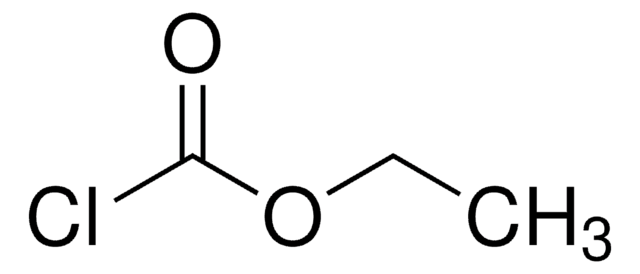All Photos(1)
About This Item
Linear Formula:
HOC6H3(NO2)CH2CO2H
CAS Number:
Molecular Weight:
197.14
EC Number:
MDL number:
UNSPSC Code:
12352100
PubChem Substance ID:
NACRES:
NA.22
Recommended Products
Quality Level
Assay
99%
mp
146-148 °C (lit.)
solubility
ethanol: soluble 5%, clear, yellow to orange
functional group
carboxylic acid
nitro
SMILES string
OC(=O)Cc1ccc(O)c(c1)[N+]([O-])=O
InChI
1S/C8H7NO5/c10-7-2-1-5(4-8(11)12)3-6(7)9(13)14/h1-3,10H,4H2,(H,11,12)
InChI key
QBHBHOSRLDPIHG-UHFFFAOYSA-N
Looking for similar products? Visit Product Comparison Guide
Related Categories
General description
4-Hydroxy-3-nitrophenylacetic acid enhances the ice-nucleation activity of Xanthomonas campestris.
Application
4-Hydroxy-3-nitrophenylacetic acid was used in the synthesis of 4-hydroxy-3-nitrophenylacetyl caproic acid.
Signal Word
Warning
Hazard Statements
Precautionary Statements
Hazard Classifications
Eye Irrit. 2 - Skin Irrit. 2 - STOT SE 3
Target Organs
Respiratory system
Storage Class Code
11 - Combustible Solids
WGK
WGK 3
Flash Point(F)
Not applicable
Flash Point(C)
Not applicable
Personal Protective Equipment
dust mask type N95 (US), Eyeshields, Gloves
Choose from one of the most recent versions:
Already Own This Product?
Find documentation for the products that you have recently purchased in the Document Library.
M Watanabe et al.
Bioscience, biotechnology, and biochemistry, 58(12), 2269-2270 (1994-12-01)
Cultivation of an ice nucleation-active strain of Xanthomonas campestris in the presence (1 ppm) of 4-hydroxy-3-nitrophenylacetic acid resulted in enhancement of its ice-nucleation activity. Both the ice-nucleation-active protein, InaX, and its mRNA were effectively expressed in the bacterial cells cultured
Linda D Rankin et al.
Journal of bacteriology, 190(18), 6170-6177 (2008-07-29)
Chromatin immunoprecipitation and microarray (ChIP-chip) analysis showed that the nitric oxide (NO)-sensitive repressor NsrR from Escherichia coli binds in vivo to the promoters of the tynA and feaB genes. These genes encode the first two enzymes of a pathway that
Jennifer L Marshall et al.
European journal of immunology, 41(12), 3506-3512 (2011-09-21)
Rapid production of neutralizing antibody can be critical for limiting the spread of infection. Such early antibody results when B-cell blasts mature directly to plasmablasts without forming germinal centers. These extrafollicular responses can involve Ig class switch recombination (CSR), producing
Sanjiv A Luther et al.
European journal of immunology, 37(6), 1476-1484 (2007-05-17)
For weeks after primary immunization with thymus-dependent antigens the responding lymph nodes contain effector CD4 T cells in T zones and germinal centers as well as recirculating memory T cells. Conversely, remote nodes, not exposed to antigen, only receive recirculating
Tarique Khan et al.
Journal of immunology (Baltimore, Md. : 1950), 188(4), 1819-1827 (2012-01-24)
The mechanistic basis for efficient combating of the infinite range of foreign Ags by the limited repertoire of naive Abs expressed on primary B cell surfaces during their first encounter was addressed through elegantly designed crystallographic analyses. Resolution of the
Our team of scientists has experience in all areas of research including Life Science, Material Science, Chemical Synthesis, Chromatography, Analytical and many others.
Contact Technical Service








